Photographs by Craig Blankenhorn
Most people organize their family lives around routines. Children, especially, thrive on routines. They want to know when and where they'll be going to sleep, and what they'll be having for breakfast. When the normal order of the day is hurled into chaos by housing insecurity or homelessness, children suffer.
Photographer Craig Blankenhorn chronicles the lives of homeless families to bring the plight of these children out of the shadows. He said the most common lament he hears from homeless parents is: "It's the kids, they don't deserve this" life.
 The National Center on Family Homelessness estimated that 1.6 million children were living with their families under inadequate circumstances in 2010 — in campgrounds or cars, cheap motels, in homeless shelters or doubling up with other families.
The National Center on Family Homelessness estimated that 1.6 million children were living with their families under inadequate circumstances in 2010 — in campgrounds or cars, cheap motels, in homeless shelters or doubling up with other families.
Safe and adequate housing is a social determinant of health that impacts population wellness. Its absence affects a child's sense of security and mental and physical well-being. Donna Rongholt-Migan, executive director of The Cathedral Center shelter for single women and families in Milwaukee, said homeless children old enough to know their circumstance tend to react with anxiety to a move to a shelter. "They become skittish. Their boundaries are poor. They get kind of clingy to staff, or they won't engage at all because they don't want to open a relationship" with an expiration date. Columbia St. Mary's Hospital of Milwaukee, part of St. Louis-based Ascension Health, operates a referral clinic in the shelter and is a supporting sponsor.
Susan Bomalaski, executive director of Catholic Social Services of Anchorage, Alaska, said school officials are often the first to suspect that a child has no permanent home. "They pick up on kids having learning or behavior problems," she said. "People think of the homeless as the guy on the street corner, but the numbers don't bear that out." In Anchorage, members of homeless and housing-insecure families outnumber homeless single adults by a ratio of roughly three to two, she said.
Clare House, the Anchorage shelter for women and their children run by Catholic Social Services, is supported in part by contributions from Providence Health & Services – Alaska, based in Anchorage.
"The State of Homelessness in America 2012," a report by the National Alliance to End Homelessness, credits a one-time $1.5 billion infusion of federal money in the Homelessness Prevention and Rapid Re-Housing Program with helping keep homelessness from spiking during the depths of the recent housing crisis and recession. The three-year program, funded through the American Recovery and Reinvestment Act of 2009, provided short- or medium-term rent subsidies or other temporary financial bridges for more than 1.3 million people, according to Brian Sullivan, a spokesman for the U.S. Department of Housing and Urban Development. (Both Clare House and Cathedral Center used the funds to keep people housed through financial travails including temporary job loss or when a landlord's property foreclosure resulted in tenant evictions.)
Sullivan said on an ongoing basis HUD now gives local governments and shelter agencies the option of dedicating portions of their HUD-issued "emergency solution grants" to rapid re-housing or other homelessness prevention initiatives.
As measured in HUD's January 2011 point-in-time national census on homelessness, the number of individuals in homeless families decreased by 1 percent from 2009 to 2011 (although it increased by 20 percent or more in 11 states). On the 2011 survey night, there were 234,079 adults with children in shelters, in transitional housing or living without shelter.
Although the economy has shown signs of recovery, housing insecurity and a related lack of affordable housing remains a national challenge. Homelessness is a lagging economic indicator; and surveyors in 2011 noted a sharp increase in the number of people "doubling-up" because they can't find affordable housing — a situation that puts people at higher risk of homelessness.
Individuals and families residing at the Cathedral shelter still have a harder time getting on their feet today than a few years ago. The average stay at the shelter was 23 days in 2011, compared with seven days in 2008.
Rongholt-Migan said families and working adults living in her shelter tend to mask their economic situation because they are embarrassed by it. But young children are without guile and when Rongholt-Migan spoke at a grade school to thank the school children for donating to the homeless shelter, a little girl raised her hand to ask,
"Is that where I'm staying now?"
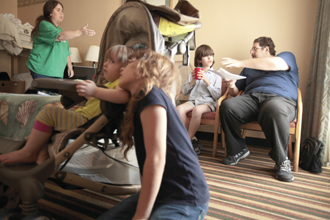 April 26, Kissimmee, Fla. | 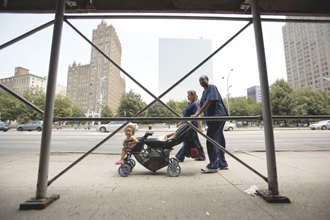 June 28, Livingston, N.J. |
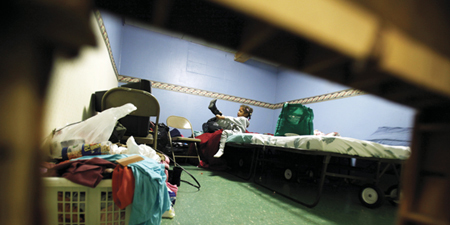 Feb. 10, Beloit, Wis. |
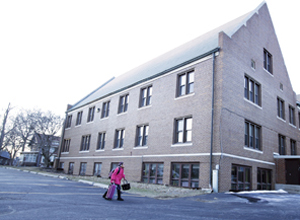 Feb. 12, Beloit, Wis. | 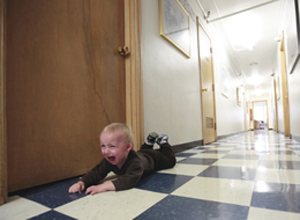 Feb. 8, Janesville, Wis. |
